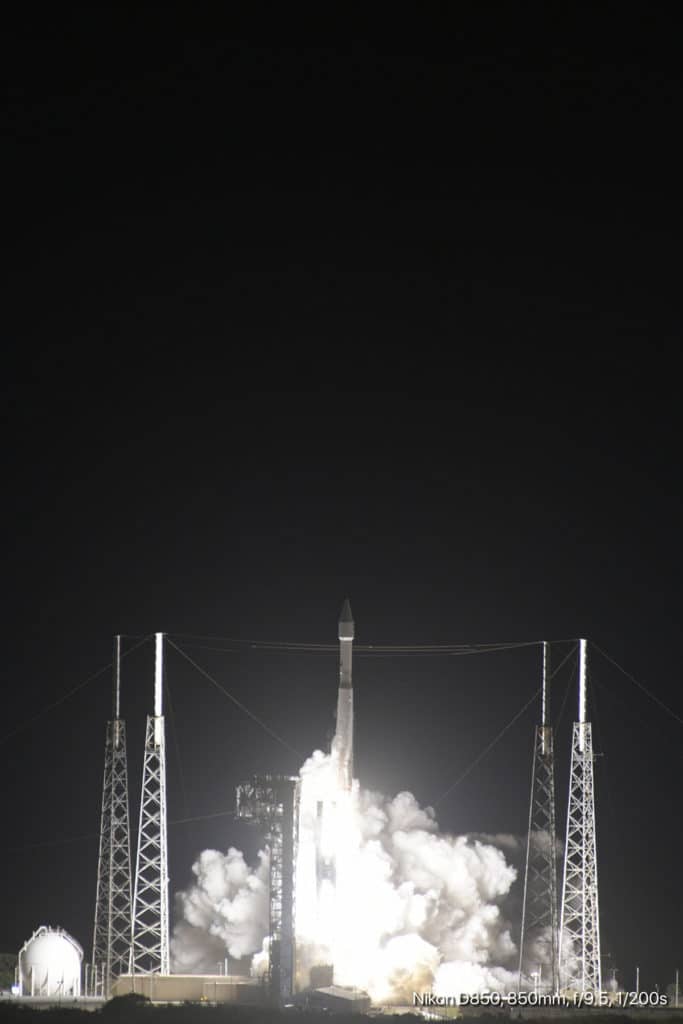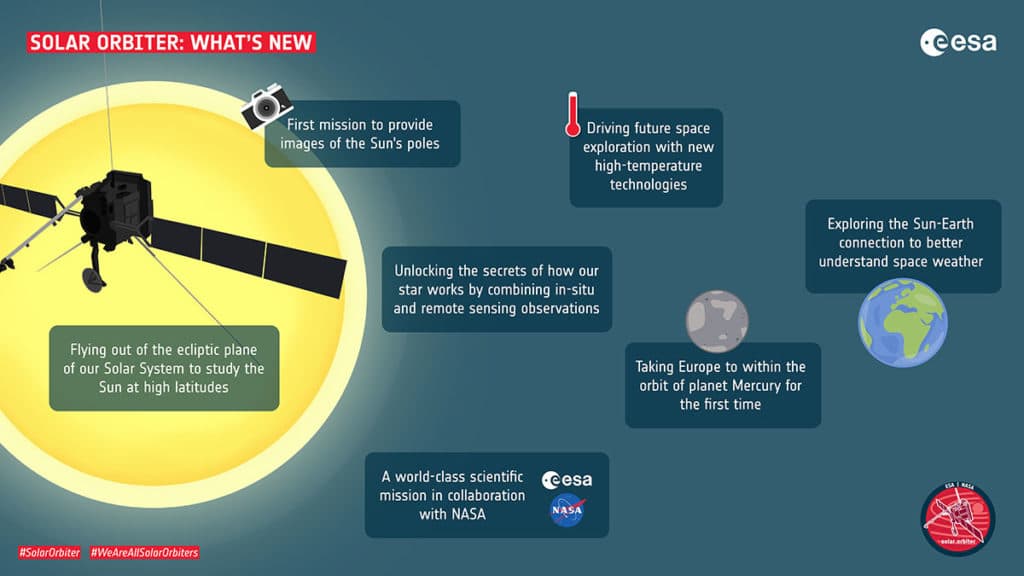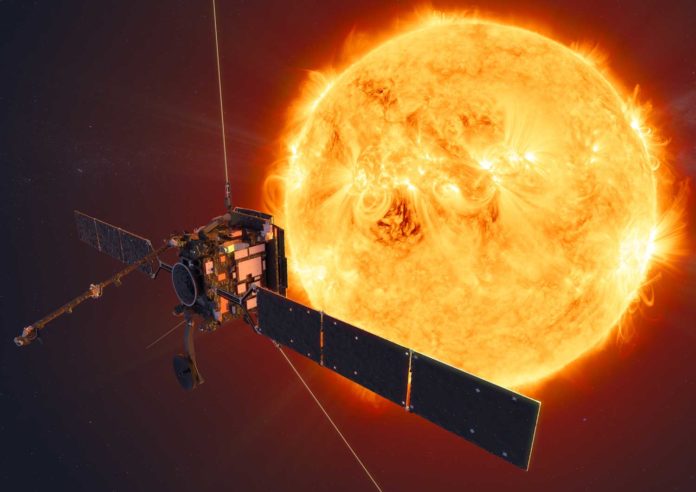On Monday, 10 February 2020, ESA’s new Sun-exploring mission, Solar Orbiter, launched successfully. The 3,790-lb (1,800 kilograms) spacecraft lifted off atop a United Launch Alliance (ULA) Atlas V rocket, rising off a pad at Space Launch Complex 41 here at Cape Canaveral Air Force Station on Sunday (Feb. 9) at 11:03 p.m. EST (0403 GMT on Feb. 10).
Solar Orbiter will get as close as 42 million km to the Sun, about a quarter of the distance between the Sun and Earth. The shuttle and its instruments, including its 18-m solar array, were designed to survive scorching temperatures of up to 500°C and withstand a steady siege by exceptionally charged particles of the solar wind for at least seven years.

During the mission, the Solar Orbiter will view some of the never-before-seen regions of the Sun, including the poles. It will also shed light on the star’s activity, such as the formation of the solar wind. The mission will also provide data about the Sun’s magnetic field and how it arises.
ESA’s Solar Orbiter is one of two complementary spacecraft studying the Sun at proximity: it will join NASA’s Parker Solar Probe, which is already engaged in its mission.

Beyond accomplishing its own science goals, Solar Orbiter will provide contextual information to improve the understanding of Parker Solar Probe’s in situ measurements. By working together in this way, the two spacecraft will collect complementary data sets that will allow more science to be distilled from the two missions than either could manage on its own.
The Sun is essential to life on Earth. It is both the central engine of the Solar System and its central enigma. By the end of the European Space Agency’s Solar Orbiter mission, we will know more about the Sun and how to reduce the risks of its disruption of our technology on Earth than ever before.
